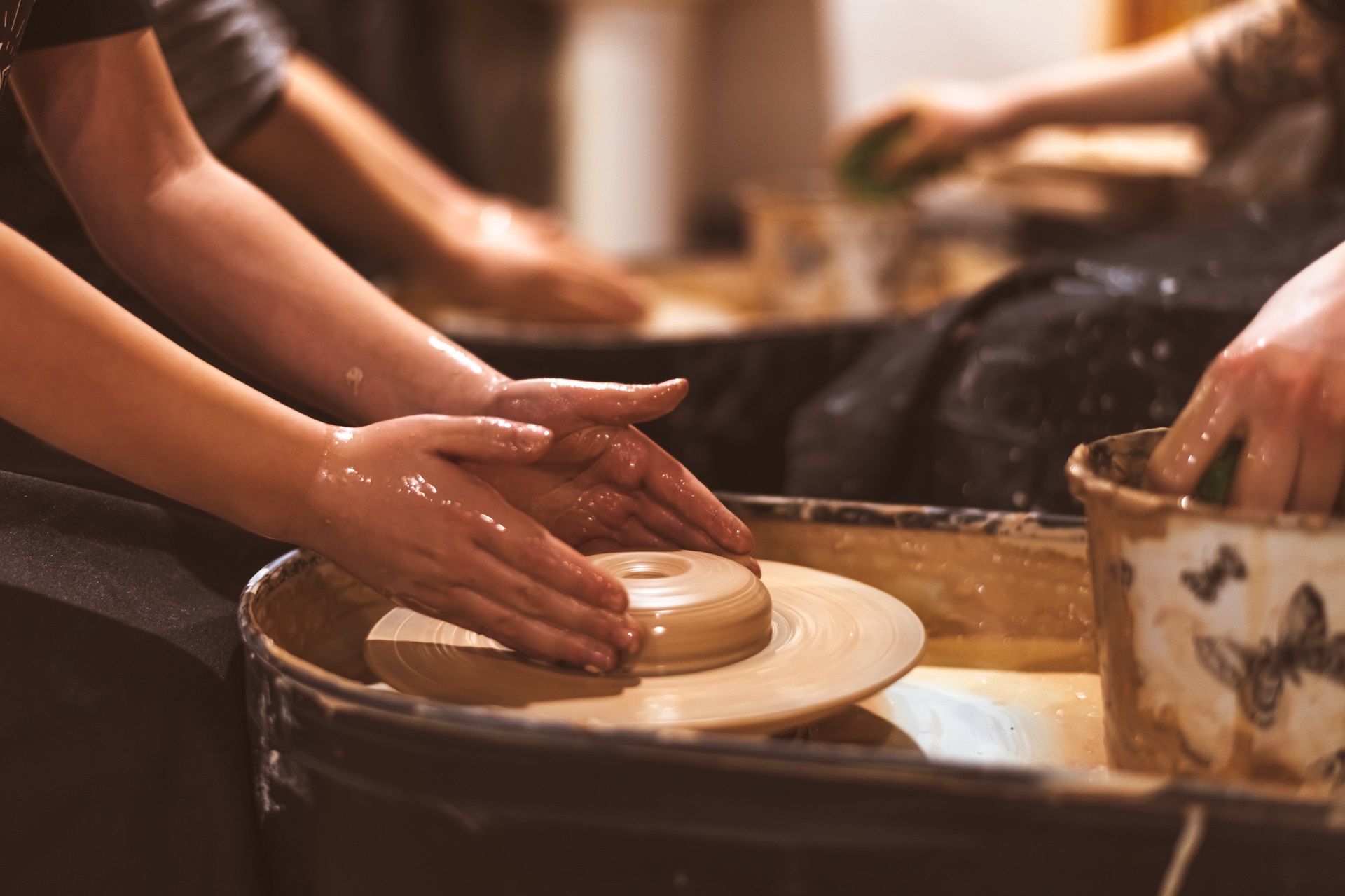Exploring the world of pottery making is a fantastic way to tap into your creativity and create something beautiful with your hands. Whether you’re searching for a new hobby or looking to improve your artistic skills, pottery-making offers endless possibilities. Our ceramic studio in Adelaide is the perfect place to dive into this craft, and we’re here to guide you through the basics.
Starting with simple techniques can make the pottery-making process less daunting and a lot more fun. Hand-building techniques like pinch pots, coil building, and slab construction are fundamental skills that lay the groundwork for more advanced projects. These methods are accessible, requiring minimal equipment, and allowing for a wide range of creative expression.
Another exciting method is wheel-throwing, where you use a potter’s wheel to shape your clay. The sensation of the wheel spinning beneath your hands as you form your pot or vase is incredibly satisfying. While it may take some practice to master, the rewards are well worth the effort. Plus, there’s always something new to learn, whether it’s a different shaping technique or a new way to decorate your pieces.
Pottery-making tools and techniques can seem overwhelming at first, but with the right guidance, you’ll soon find yourself confidently crafting your own unique pieces. So, grab some clay, bring your enthusiasm, and let’s get started on your pottery-making journey in Adelaide!
Understanding the Basics of Hand-Building Techniques
Hand-building techniques form the foundation of pottery making. One of the simplest and most enjoyable methods for beginners is creating pinch pots. To make a pinch pot, start with a ball of clay, roughly the size of a small apple. Using your thumb, press into the centre of the ball to create a hole. Then, gently pinch the sides between your thumb and fingers, rotating the clay as you go. This method allows you to create small bowls and other simple forms with ease. The beauty of pinch pots lies in their simplicity and the tactile experience of shaping the clay directly with your hands.
Another fundamental technique is coil building. Begin by rolling out long, snake-like coils of clay. These coils can then be layered and smoothed together to build up the walls of your pottery. This method is incredibly versatile, allowing for intricate designs and larger structures. Coil building is also a forgiving technique; if a coil falls out of place, it can be repositioned and smoothed over without much fuss. This makes it ideal for beginners who are still getting the hang of the material.
Slab construction is another accessible technique for those new to pottery making. It involves rolling out flat pieces of clay, or slabs, which can be cut and joined together to create more geometric shapes. Use a rolling pin to flatten the clay to an even thickness. Then, cut out the desired shapes using a knife or a clay cutter, and join them together by scoring the edges and using a little water or slip (a mixture of clay and water). This technique is excellent for making boxes, platters, and more structured pieces. The process of slab construction encourages precision and creativity, making it a satisfying technique for beginners to master.

Discovering the Wheel-Throwing Technique
Setting up and using a potter’s wheel might seem intimidating, but with the right guidance, it can be a rewarding and enjoyable experience. The first step is to ensure your wheel is stable and at a comfortable height. Position a bucket of water beside you and have your clay and tools within easy reach. As you sit at the wheel, make sure your posture is upright and your feet are positioned to control the speed of the wheel smoothly.
Begin by centring the clay on the wheel, which is crucial for creating uniform pieces. Wet your hands and the clay to reduce friction. Place the clay in the centre of the wheel and use your hands to press it down firmly. With the wheel spinning, use both hands to shape the clay into a cone, then compress it back down into a mound. This process helps to centre the clay, making it easier to work with. Once centred, you can start shaping the clay into your desired form, whether it’s a bowl, vase, or another piece.
One common challenge for beginners is maintaining control of the clay as the wheel spins. This can lead to uneven shapes or collapsed pieces. To address this, keep your hands steady and use the support of your body to guide the clay. Another tip is to keep the clay and your hands wet to prevent sticking. Take your time and practise patience—mastery of the wheel comes with experience and persistence.
As you progress with wheel-throwing, you’ll develop a feel for the speed and pressure needed to create consistent and beautiful pieces. Remember, every potter starts as a beginner, and each attempt brings you closer to mastering this dynamic technique. With practice and patience, you’ll find wheel-throwing to be an immensely satisfying part of your pottery-making journey.
Essential Pottery-Making Tools for Beginners
Having the right tools makes pottery making more enjoyable and efficient. Let’s look at the essential tools you’ll need as a beginner. Pottery needles are one of the most important tools, used for cutting clay, scoring, and fine details. They’re thin and sharp, making them perfect for precision work.
Ribs and scrapers are also indispensable. Ribs shape and smooth your clay, while scrapers help in refining your pieces. They come in various shapes and are usually made from wood, metal, or rubber. Wire cutters, another vital tool, are used to slice large pieces of clay into manageable chunks and to cut finished pieces off the wheel.
Scraping tools and loop tools help in hollowing out clay and trimming. Additionally, sponges are essential for keeping your hands and clay moist while you work. Each tool has its purpose and will become more familiar as you practise.
Finding these tools in Adelaide is easy. Many dedicated art and craft stores offer a wide selection of pottery-making tools. Some local markets also stock these items, and you can find everything you need to start your pottery journey. Having these tools on hand will make the process smoother and more enjoyable.
Tips for Glazing and Decorating Your Pottery Pieces
Glazing and decorating your pieces add the final touch, transforming them into works of art. Understanding basic glazing techniques can help you achieve beautiful and functional pottery. Dip glazing involves submerging your piece in a glaze, providing a uniform finish. Brushing glaze on with a brush offers more control and is ideal for intricate designs.
Underglazes are used for colouring and decorating before a clear glaze is applied on top. These can be painted or stamped onto your piece, allowing for detailed and colourful patterns. Stencil and wax-resist techniques are also popular. Wax-resist involves painting a design with wax before glazing. The wax resists the glaze, leaving a contrasting pattern.
For creative decorating ideas, consider using simple tools like sponges, stamps, and carving instruments. Sponging glaze onto your pottery gives a textured look, while stamps can add unique designs effortlessly. Carving into the clay before glazing, known as sgraffito, creates beautiful patterns.
Best practices for glazing include testing your glazes on small pieces first and ensuring your pieces are clean before applying glaze. Always follow the firing instructions for your specific glaze to avoid issues during the final stage. With these tips, you can create stunning and personalised pottery pieces.
Conclusion
Pottery making is a rewarding and creative endeavour that offers numerous techniques for beginners to explore. From the foundational hand-building methods to the more advanced wheel-throwing technique, there’s something for everyone. Equipping yourself with essential tools and mastering glazing and decorating techniques can elevate your pottery-making experience.
Whether you’re looking to relax, express your creativity, or learn something new, the world of pottery making welcomes you. Adelaide provides a vibrant backdrop for this artistic journey, with plenty of resources and communities to support you.
Ready to start your pottery-making adventure? Join us at The Potters Shed. Our ceramic studio offers a range of pottery classes in Adelaide designed for all skill levels, providing a welcoming and inspiring space to develop your craft. Let your creativity flourish and discover the joy of pottery making today!

